Orthotic Management of Upper Extremity Fractures
1/53
There's no tags or description
Looks like no tags are added yet.
Name | Mastery | Learn | Test | Matching | Spaced |
|---|
No study sessions yet.
54 Terms
Fracture
an interruption in the continuity of bone and/or cartilage
Fracture-Dislocation
a fracture through or near a joint, accompanied by dislocation of the joint
Pathological Fracture
a fracture occurring through a weak or abnormal bone
Stress Fracture
Repeated overuse of the body part not yet accustomed to stress
Simple (closed) Fracture
this is a kind of fracture that does not break through the skin
Compound (open) Fracture
This is a kind of fracture that breaks through the skin and the bone is visible
Complete Fracture
a break all the way through the bone
Incomplete Fracture
A break that still has bone maintained.
Undisplaced Fracture
no shift from normal alignment
Displaced Fracture
fragments are shifted out of their normal alignment
Displacement Categories
translation
rotation
angulation
overriding
compression
distraction
Translation is
the movement of fractured bones away from each other in a % form
Overriding is
% apposition (being side by side or close together) describes the amount of overlap
Fracture Configurations
transverse
oblique
butterfly
spiral
comminuted
greenstick
Transverse
fracture occurs at right angles to the long axis of the bone
Oblique
fracture line less than 90 degrees to the long axis of the bone
Longitudinal
fracture occurs along or nearly along the long axis of the bone
Butterfly
usually due to a 3 point bending force
transverse on the tensile side of the bone and oblique on the compressive side
Spiral
fracture line curves around the bone
Comminuted
two or more fracture fragments
Greenstick
incomplete fracture of the long bone; young, soft bone bends and cracks
Location of Fracture
diaphyseal
metaphyseal
epiphyseal
intra-articular
Diaphyseal
affecting the shaft of a long bone
Metaphyseal
affecting the portion of a developing bone between the diaphysis and the epiphysis
Epiphyseal
affecting the ossification centers
Intra-articular
includes the articular surfaces
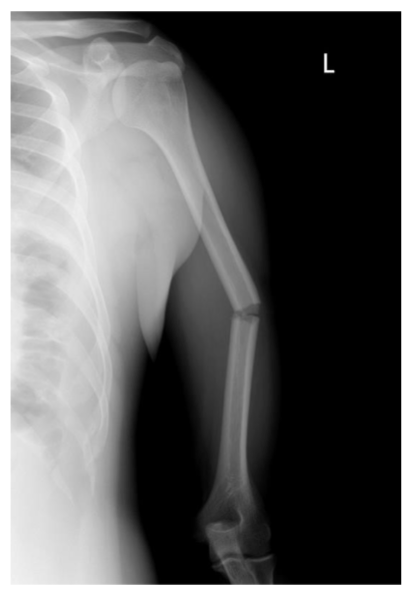
What type of fracture?
humeral, mid-shaft, diaphyseal, simple, complete
General Management Goals
Restoration of the function and cosmesis in the shortest time possible
reduction of the fracture
immobilization and maintenance of the reduction
early restoration of function
Factors Affecting the Rate of Healing
age
extent/ type/ location of fracture
area of contact and accuracy of reduction
Complications of Fx
synostosis
malalignment
delayed and non-union (pseudarthrosis)
skin issues
vascular compromise
refracture
poor muscle strength and ROM
nerve palsy infection
Synostosis
fusion of separate bones
Pseudarthrosis
false joints
Objectives of Orthotic Management
successful union through early graded function in fracture orthosis capable of responding to volume changes
Sarmiento Principle
control angular, torsional, and compressive stresses
permit joint function
support and stabilize pseudarthroses
General Principles of Fracture Management
Long Bones
employ fluid mechanics
Sarmiento Principle
Closed volume - fracture brace with viscous fluid tissue - optimum healing environment
General
Rule of Thirds
Rule of Thirds
if the third of the bone closest to a joint is broken the next segment must be braced (immobilized)
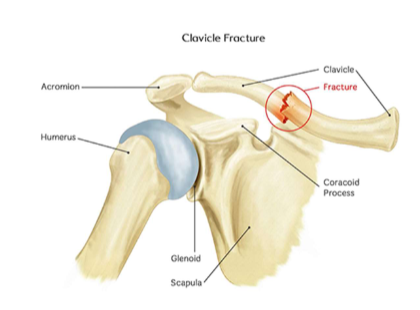
Clavicle Fx
usually benign
rare - can also puncture the trachea causing acute dyspnea
Clavicle Shaft Fx
most common - Greenstick or Complete
unites quickly - almost always a mal-union
treatment is with a figure eight harness for comfort not union
following union - ossification results in a visible anterior lump
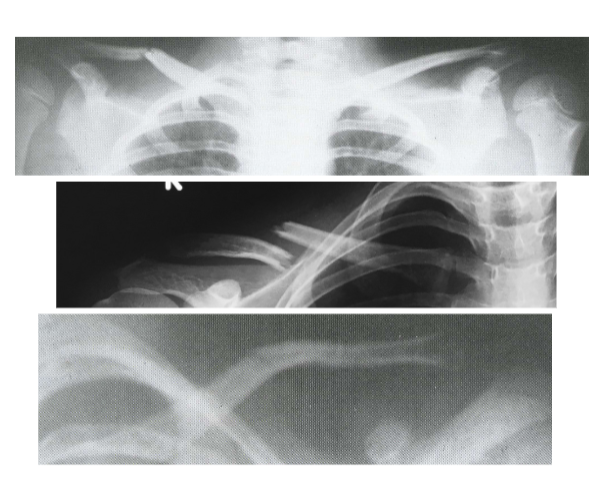
Intervention for Clavicle Fx
Figure 8 Harness
Sling
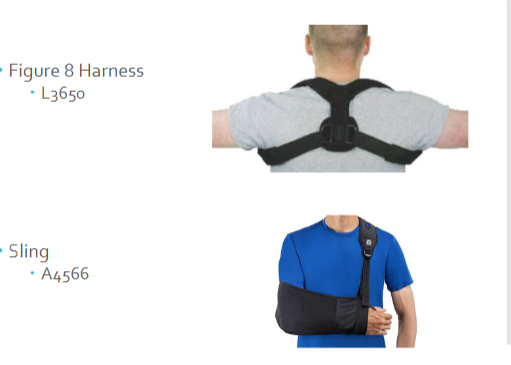
Scapula Fx
associated with high energy/trauma
other injuries to head, clavicle, spine, ribs
more commonly seen for chronic dislocation or separation
very rarely treated orthotically
immobilization and sling
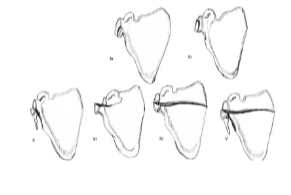
Humeral Fx
proximal 1/3 - immobilize shoulder through traction immobilization or Statue of Liberty cast
mid-shaft without significant angulation can use fx brace
distal 1/3 - immobilize elbow
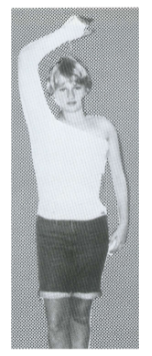
Options for a Humeral Fx other than Statue of Liberty cast?
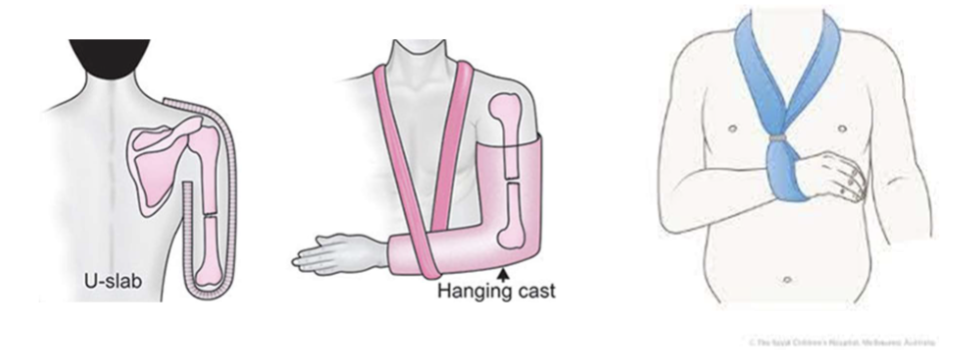
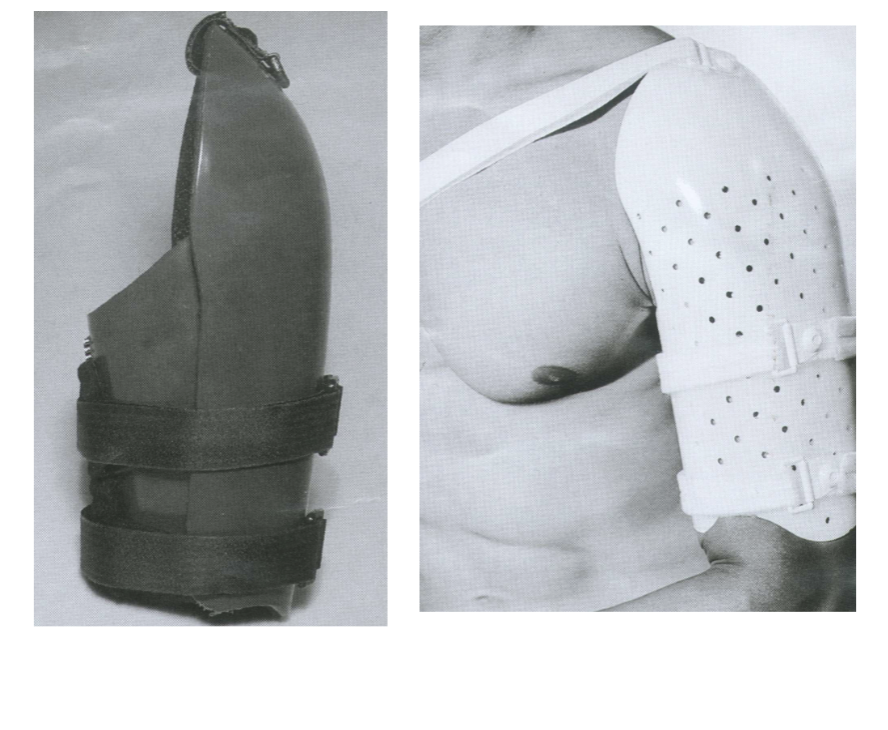
Circumferential and clam-shell style humeral fx bracing
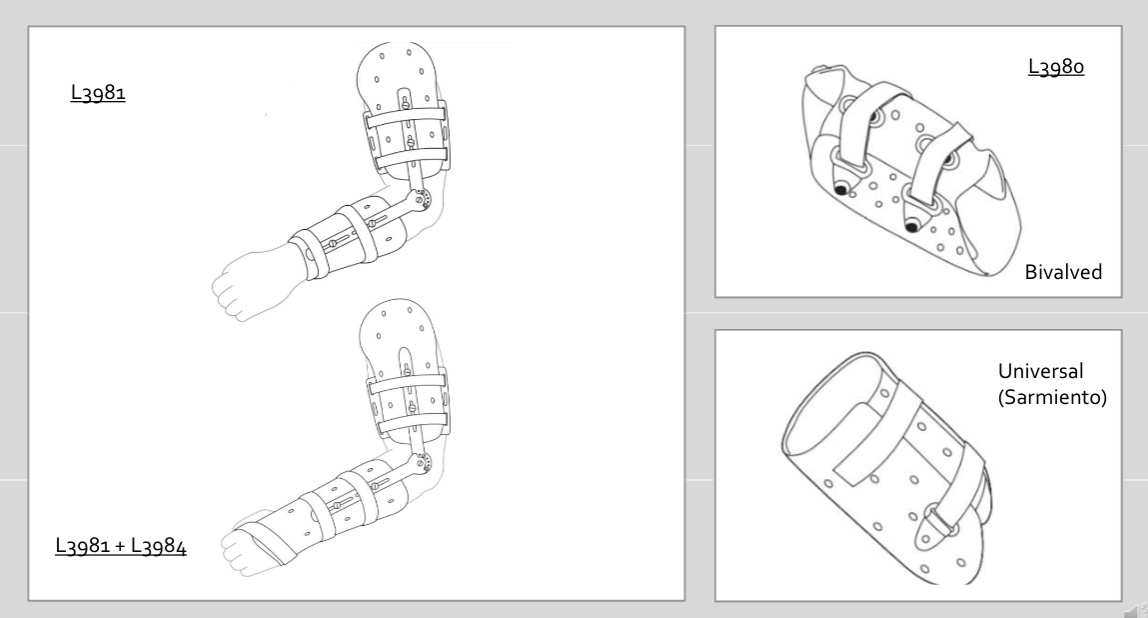
Elbow Dislocations/Fractures
possible orthotic treatment - humeral/forearm fracture brace system
used with joints
used with arm sling
often internally fixated - pins/intramedullary rods
sometimes traction immobilization
Elbow Traction Devices
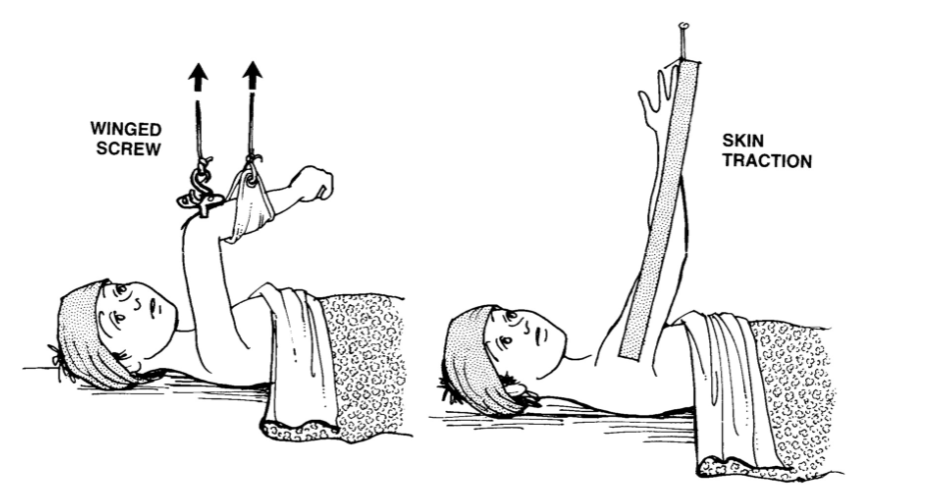
Forearm - Radial/Ulnar
BBF - both bone fracture usually requires percutaneous pinning
proximal third radial or ulnar - immobilize elbow
mid forearm radial/ulnar BBF
Distal third of forearm (radial ulnar of BBF)
immobilize the wrist
align wrist at 0 degrees extension - not functional position
fracture orthosis with palmar extension (pre-fab)
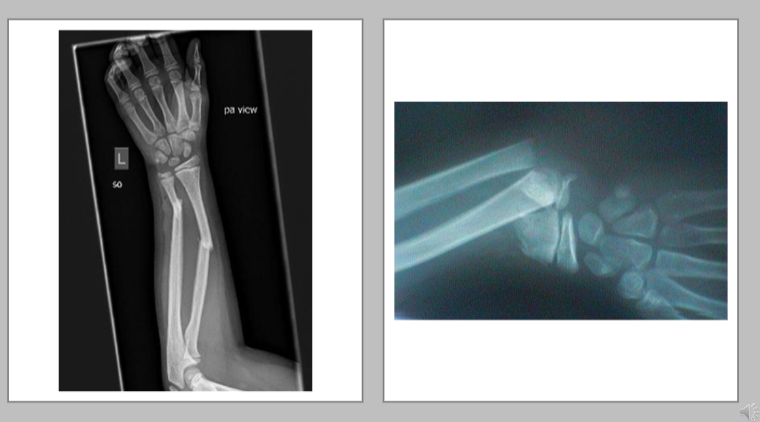
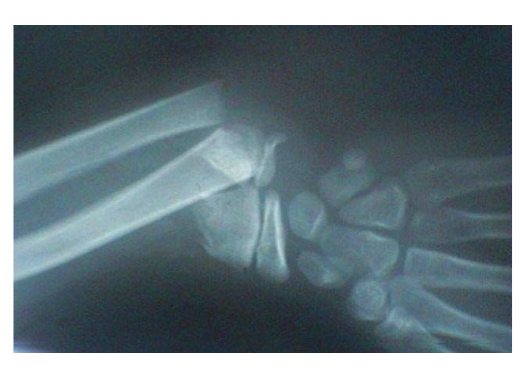
What was the mechanism of injury for this x-ray?
FOOSH - fall on outstretched hand
BBF
both bone fracture
Colles Fx
distal radius fx
brachioradialis - distal radius attachment, pronation/supination
may require plates and screws if dislocated
acute - cast above the elbow and below the elbow
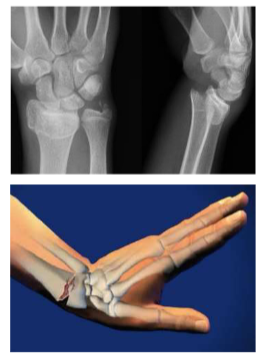
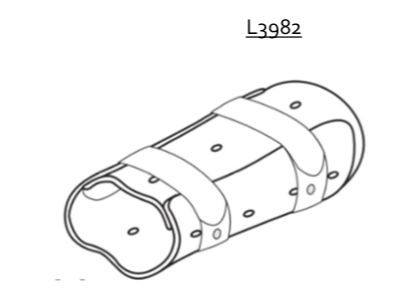
What is unique about this brace?
It separates the radius from the ulna
Colles Fx Interventions
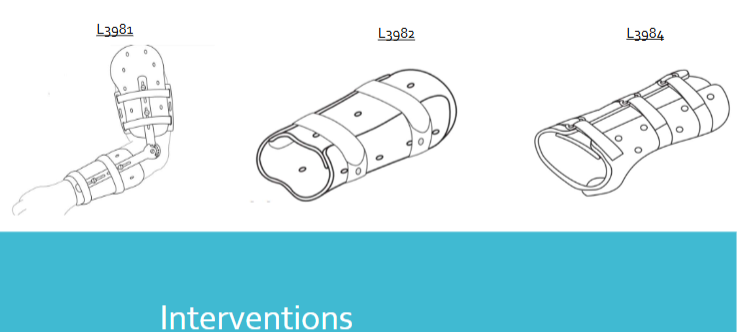
Wrist Fx
Scaphoid - snuff box pain
immobilize thumbs, fingers, and wrists up to the elbow
controls pronation/supination
carpal row neutral?
Fracture Orthosis with palmar extension aligned with wrist a 0 degrees extension - not a functional position
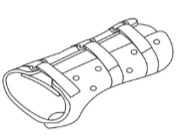
Metacarpal Fx
Immobilize hand, fingers, and wrist.
WHFO pre-fab
HO, MC fx Ox, pregab
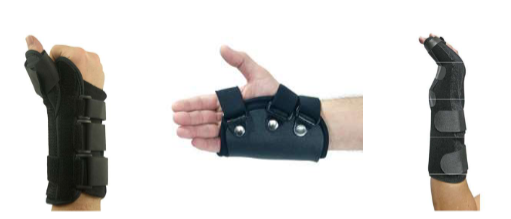
Digit Fx
Buddy splint
finger strips/splints
FO, PIP, DIP, Static, Pre-fab
volar strut stabilization
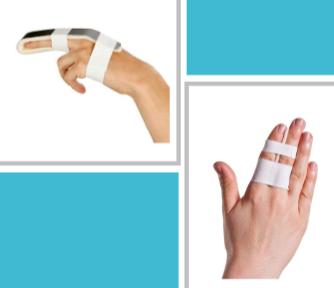
Rehabilitation
patient education is critical
atrophy may occur
PT and OT are essential for certain injuries
exercises and ROM may be limited by MD
Functional bracing - predicated on premise that physiologically induced motion at Fx site is conducive to osteogenesis
immobilization of adjacent joint and rigid fixation can deter healing
continual compression of the soft tissue is essential for maintenance of alignment and edema reduction
frequent x-rays may be necessary as well as instructions to discontinue orthosis